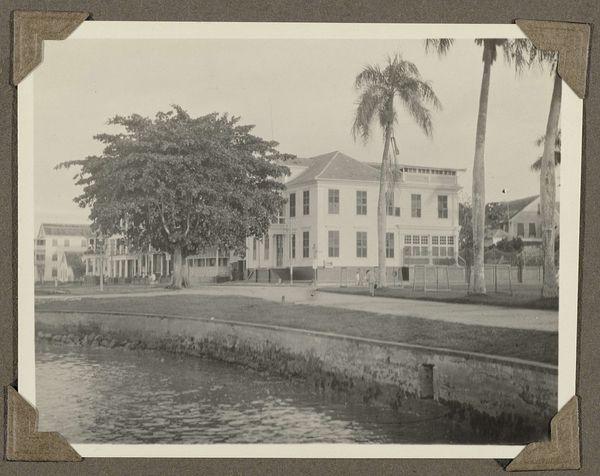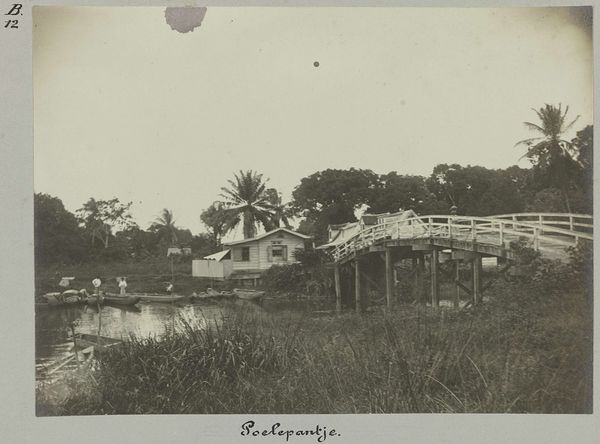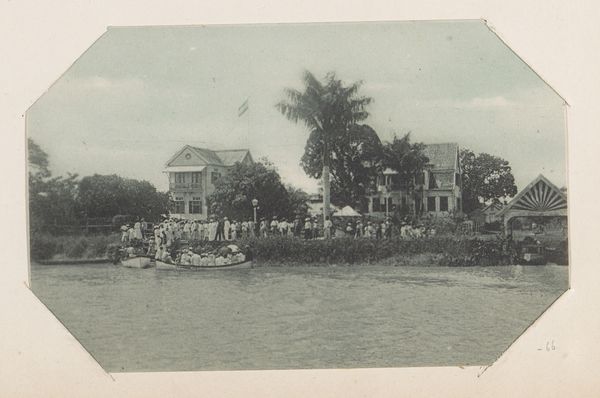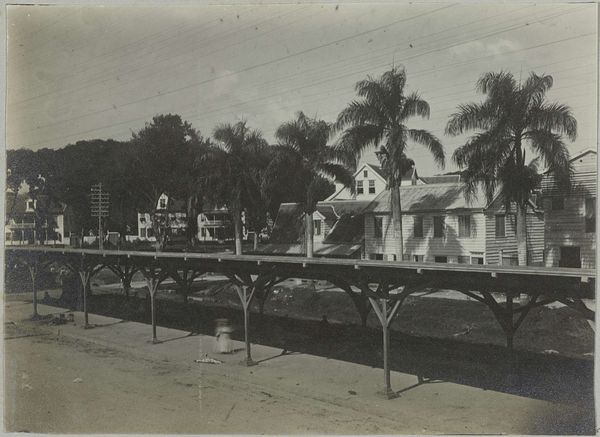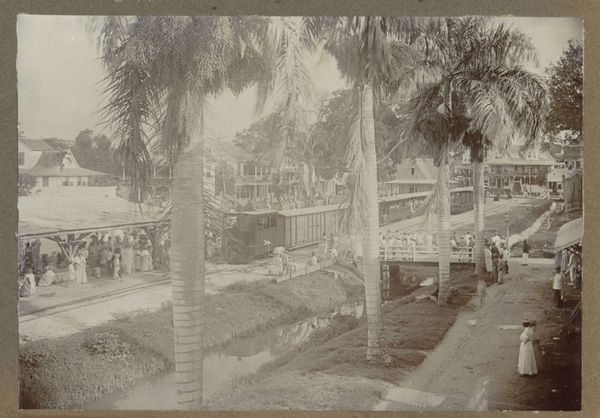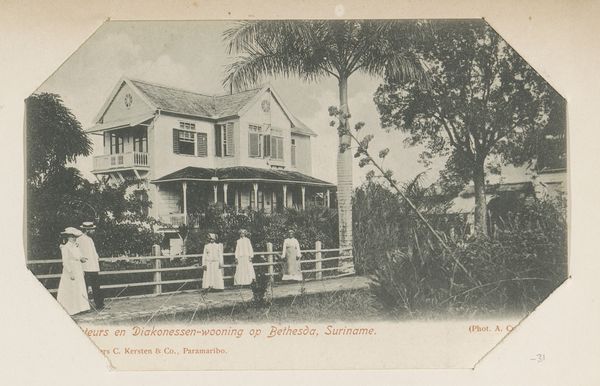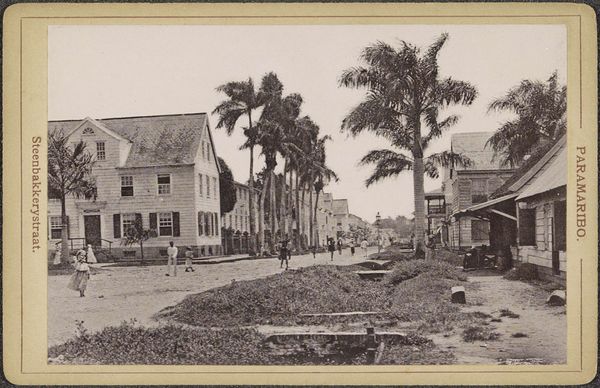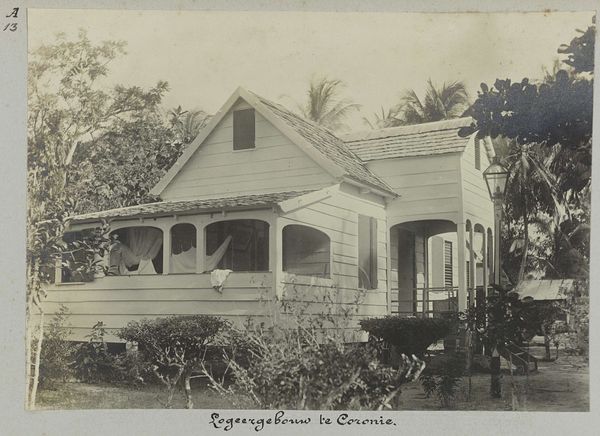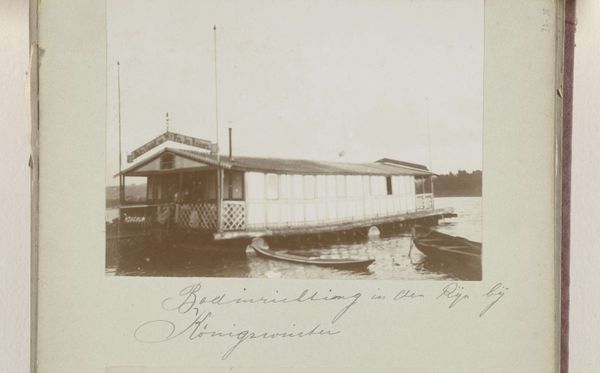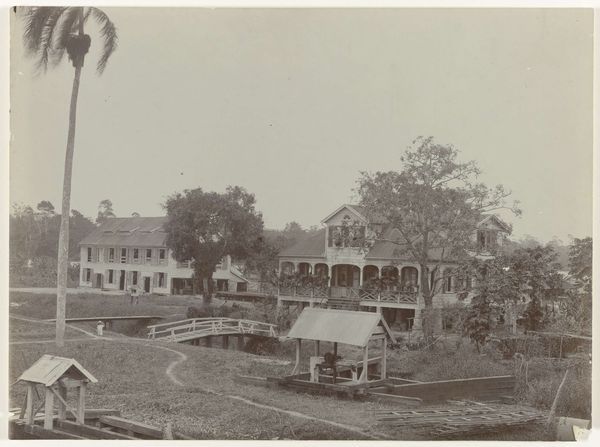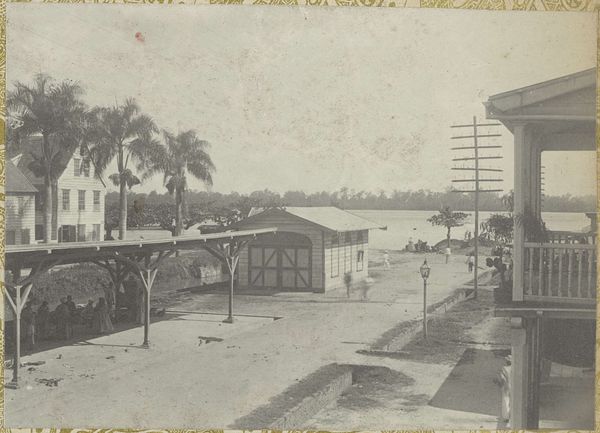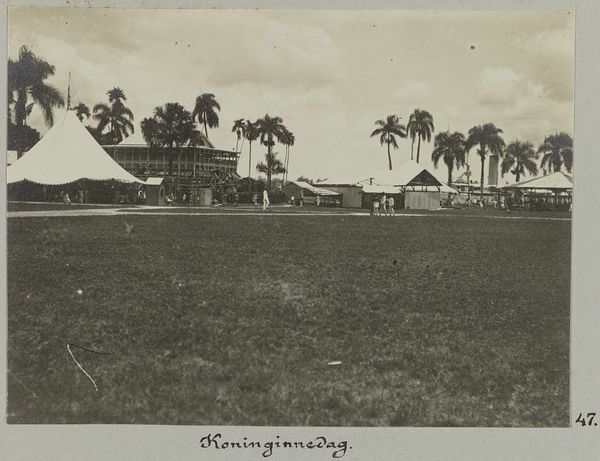
photography, gelatin-silver-print
#
pictorialism
#
landscape
#
photography
#
orientalism
#
gelatin-silver-print
#
cityscape
Dimensions: height 81 mm, width 111 mm
Copyright: Rijks Museum: Open Domain
Curator: This gelatin-silver print, known as "Mond Knuffelsgracht," comes to us from Hendrik Doijer and is dated to around 1903-1910. The composition leads us along the waterways, flanked by these almost quaint architectural details. What's your initial read? Editor: Mmm, wistful. There’s a dreamy, old-postcard vibe that makes me think of far-flung colonial outposts, sleepy afternoons, and palm trees whispering secrets. But also a kind of…melancholy quiet. Curator: That matches something I felt as well. The tonal range of the print definitely lends itself to this. Note how the pictorialist style almost deliberately softens the edges, fostering that sentimental quality. It romanticizes what is essentially a cityscape. The scene depicts a canal view in what was then Dutch Guiana. Editor: Ah, Dutch Guiana—now Suriname! Suddenly, that "colonial outpost" feeling makes a whole lot more sense. It's like a forgotten corner of the world captured in this faded photograph. And "Knuffelsgracht" translates roughly to "Hug Canal" right? What a gentle name. But that gentleness is at odds with the implied history. Curator: Precisely. While the immediate aesthetic draws on Western art traditions and perhaps idealized exoticism for a European audience, the cityscape as subject marks the tangible outcomes of European colonial activities. It calls upon that broader historical framework and all that implies in terms of exchange and often, extraction. The placidness belies something else. Editor: Absolutely. The figures on the bridge are all facing away too, contributing to the image's detachment. What you said about 'exoticism'...do you feel that ties into Orientalism somewhat? Curator: Absolutely. We can see pictorialism acting as a means of orientializing here. The very act of framing this locale through a soft, painterly lens positions it as "other" than Europe while conveniently suppressing any less savory narratives in this early-20th-century moment. Editor: Well, it’s a layered image, no question. I came for the whispering palm trees and stayed for the historical reckoning. Curator: Indeed. And it's in reconciling those divergent layers where the photograph reveals its complexities.
Comments
No comments
Be the first to comment and join the conversation on the ultimate creative platform.
